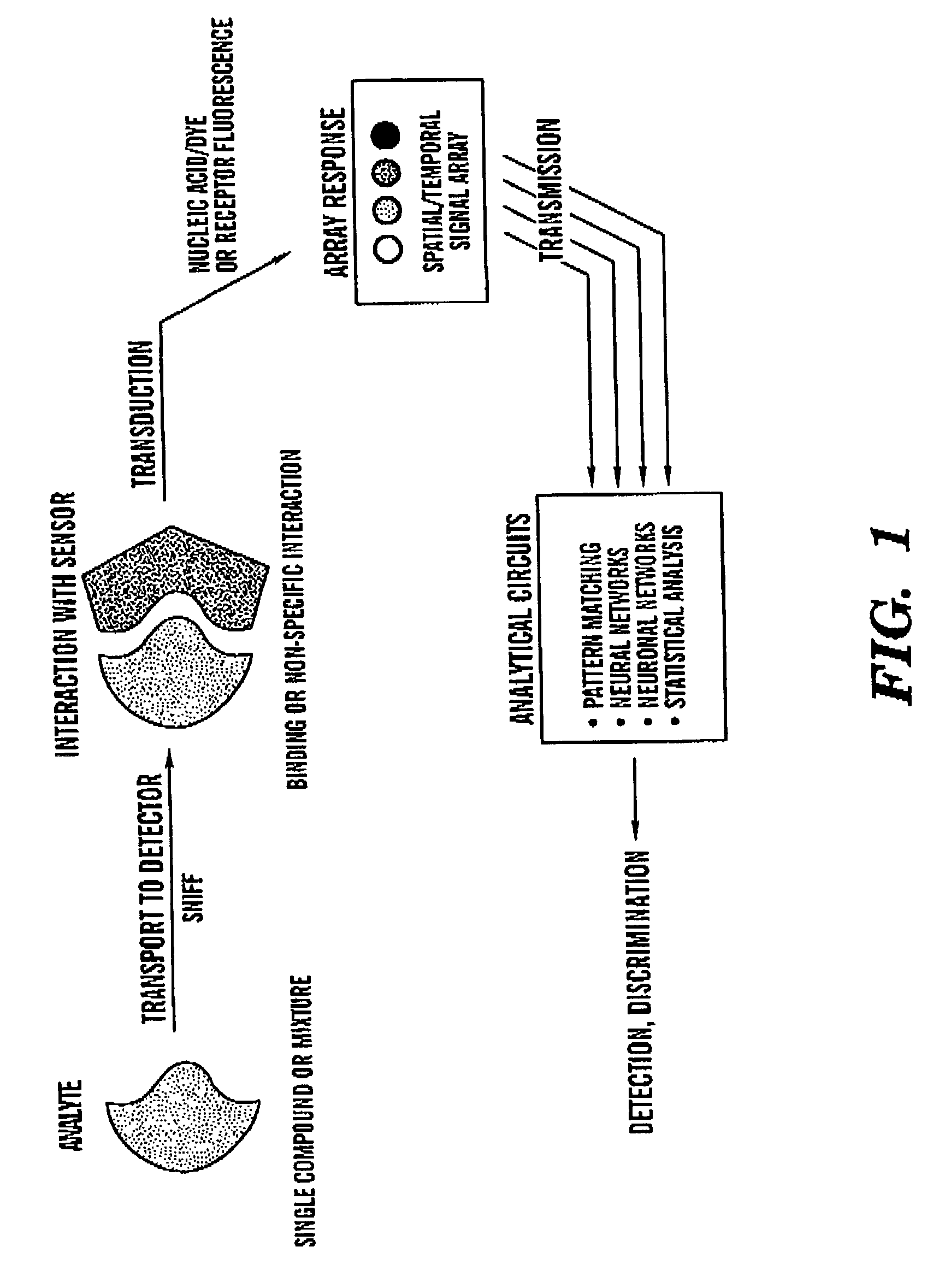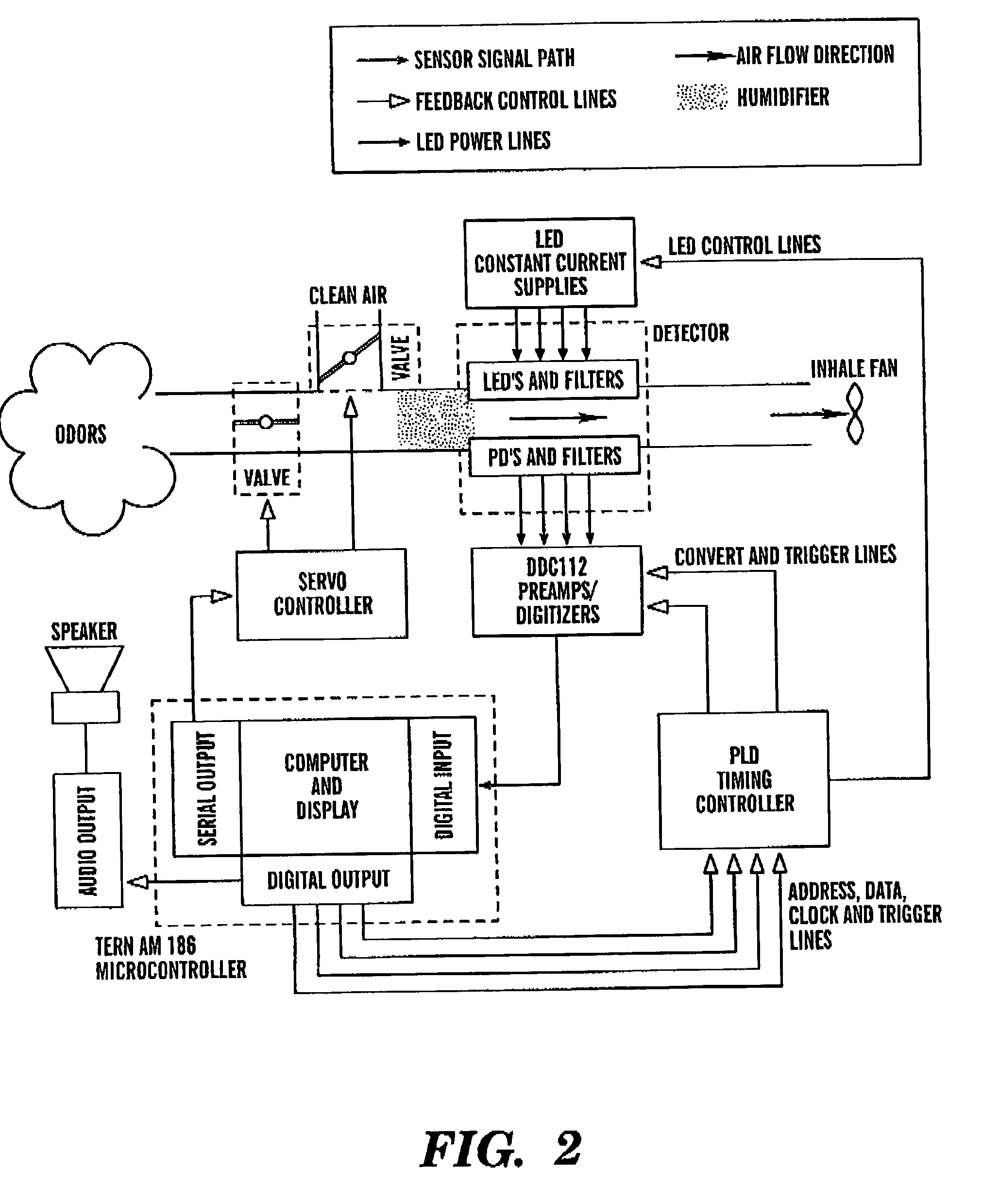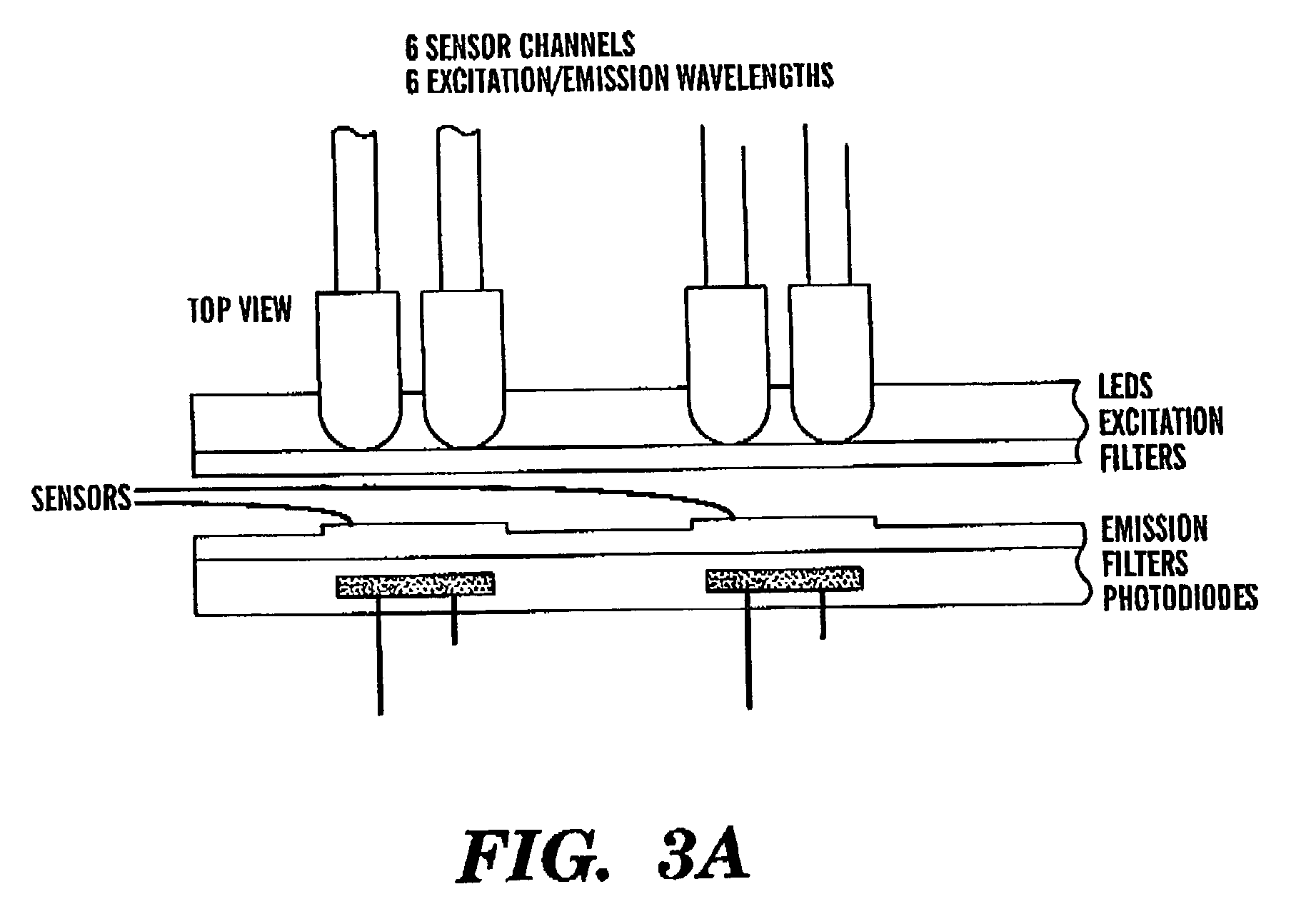Intelligent electro-optical nucleic acid-based sensor array and method for detecting volatile compounds in ambient air
a sensor array and nucleic acid technology, applied in the direction of fluorescence/phosphorescence, instruments, specific gravity measurement, etc., can solve the problems of inability to reliably, fast, easy and relatively cheap screening methods, and inability to collect sufficient material in time for preconcentration, etc., to achieve rapid response time, high throughput screening, and rapid sampling time
- Summary
- Abstract
- Description
- Claims
- Application Information
AI Technical Summary
Benefits of technology
Problems solved by technology
Method used
Image
Examples
example 1
[0281]
TABLE 2A Summary of DNA UsedLengthMelting(b ortempDNAbp)Structure(° C.)SourcePblueScriptSK29000SupercoiledStratageneDS00133AT hairpin,51.3synthesized14 bp dsDS00233GC hairpin,95.0synthesized15 bp dsDS003332 ss loops w / 3 bp ds45.4–46.8synthesizedAJ001224 ss loops w / 2–3 bp26.6–35.6synthesizeddsOligo dT15LinearPerkinElmer
[0282]Table 2 is a summary of DNA used in the preliminary studies. DS001 indicates the nucleic acid with a sequence TTAATATAAATTTTTCCCAAAAATTTATATTAA (SEQ ID NO: 6); DS002 indicates the nucleic acid with a sequence GGCCGCGCCCGGGGGTTTCCCCCGGGCGCGGCC (SEQ ID NO: 7); DS003 indicates the nucleic acid with a sequence GATCCTTGCTACCCTCTCCTAGGAACGATGGGA (SEQ ID NO: 8); pBluescriptSK was grown in DH5a and purified by ion exchange (Qiagen, Valencia, Calif.; or Promega, Madison, Wis.). To avoid concatamer formation, oligonucleotides DS001–3 were heated to 99° C. for five minutes at a concentration of 10 mM, and allowed to self-anneal slowly before sensor construction. AJ001...
example 2
Oligomer sequences LAPP1 and LAPP2 show distinctly different response profiles to this small test set of odorants.
Tested Nucleic Acid Sequences:
[0290]
LAPP1:5′ GAG TCT GTG GAG GAG GTA GTC 3′(SEQ ID NO 1)LAPP2:5′ CTT CTG TCT TGA TGT TTG TCA AAC 3′(SEQ ID NO 2)LAPPAS:5′ TTT GGC TTT CTG GAA ATG GGC 3′(SEQ ID NO 3)LAJ001:5′ ACC AGG ACC TGA CTA AGC AGA T 3′(SEQ ID NO 4)
[0291]Oligomers LAPP1, LAPP2, LAPPAS, and LAJ001 were synthesized and labeled at the 5′ end with the fluorescent dye Cy3(TM) during synthesis (using Cy3(TM) phosphoramidite from Glen Research). The oligomers were stored in Tris NaCl (10 mM Tris, 50 mM NaCl, pH 8) at 225 ng / ul, then diluted to a concentration of 50 ng / ul in distilled water just before use. Sensors were constructed by applying 20 ul of dilute oligomer solution to 10 mm×12 mm pieces of acid-washed 16xx silkscreen. Sensors were allowed to dry for at least 30 min at room temperature, then attached to supports for testing.
[0292]All sensors were mounted in the dev...
PUM
| Property | Measurement | Unit |
|---|---|---|
| pore sizes | aaaaa | aaaaa |
| diameter | aaaaa | aaaaa |
| diameter | aaaaa | aaaaa |
Abstract
Description
Claims
Application Information
 Login to View More
Login to View More - R&D
- Intellectual Property
- Life Sciences
- Materials
- Tech Scout
- Unparalleled Data Quality
- Higher Quality Content
- 60% Fewer Hallucinations
Browse by: Latest US Patents, China's latest patents, Technical Efficacy Thesaurus, Application Domain, Technology Topic, Popular Technical Reports.
© 2025 PatSnap. All rights reserved.Legal|Privacy policy|Modern Slavery Act Transparency Statement|Sitemap|About US| Contact US: help@patsnap.com



